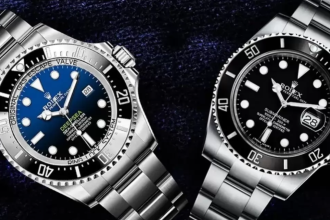Women’s bracelet jewelry has been around for centuries, and they have evolved dramatically over time. Bracelets have been worn by men and women alike, and they have been used for various purposes, including religious, cultural, and fashion. From ancient times to the present day, bracelets have undergone many transformations in terms of materials, designs, and symbolism or even customized with your name that Jewlr offers. In this article, we will explore the history of bracelets, including their evolution and significance throughout different periods.
The Origins of Bracelets

Bracelets are believed to have originated in ancient Egypt, where they were worn by both men and women. These early bracelets were made from materials such as gold, silver, and leather, and they were often adorned with precious stones and symbols. In ancient Egypt, bracelets were not just a fashion statement but also had religious significance. For example, they were believed to protect the wearer from evil spirits, and they were often used in burial rituals.
Bracelets in the Middle Ages
During the Middle Ages, bracelets were a popular accessory among the nobility, and they served as a symbol of wealth and status. These bracelets were crafted from precious metals such as gold and silver, and they were often adorned with jewels and other decorations. Bracelets during this era were not only a fashion statement but also a display of one’s social status. The nobility often wore bracelets that were embellished with intricate engravings and inscriptions that told a story or conveyed a message.
These bracelets were highly valued and treasured, often passed down through generations as family heirlooms. They were so highly prized that they were often gifted to royalty as a sign of respect and admiration. The bracelets were also worn as a display of loyalty and allegiance to the monarch and were considered a sign of one’s rank and position in society.
The Renaissance and Baroque Periods
During the Renaissance and Baroque periods, bracelets continued to be a significant accessory in women’s fashion. They evolved to become even more elaborate and ornate, reflecting the opulence and extravagance of the times. Jewelry makers began incorporating precious and semi-precious stones, such as diamonds, emeralds, and rubies, into the designs, which added to the value and intricacy of the bracelets. The bracelets were often worn not only as a fashion statement but also as a symbol of wealth and social status.
The designs of bracelets during this time were highly influenced by classical mythology and ancient Roman and Greek art. The intricate patterns and detailed depictions of gods and goddesses, such as Venus or Apollo, were popular motifs in the jewelry of the Renaissance and Baroque periods. Women’s bracelets were especially popular, and they were often worn in matching sets with necklaces and earrings.
Modern Bracelets

In the modern era, bracelets have become even more diverse in terms of materials, designs, and symbolism. Bracelets are now available in a wide range of materials, including leather, beads, and silicone. They are also available in a variety of styles, from classic and simple to bold and avant-garde. Bracelets are now worn by both men and women, and they are often used to express one’s personal style or to support a cause or organization.
Throughout history, women’s bracelets have been an important accessory that has evolved in various ways. From their religious significance in ancient Egypt to their role as a symbol of wealth and status in the Middle Ages, bracelets have played an important role in various cultures and societies. Today, bracelets are not only a fashion accessory but also a form of self-expression, with a wide range of styles and materials to choose from. Whether it’s a simple silver bracelet or a bold, colorful beaded one, women’s bracelets continue to evolve and adapt to the changing fashion trends and personal styles of people around the world.












